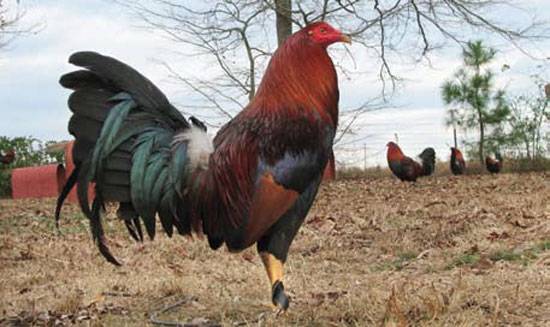Applying the principles of this to conditioning fighting fowl, the effects of a KEEP system have been recorded as extremely productive and rewarding for gamefowl breeders who have adopted it as science: your cock will hit harder, and more importantly, will be able to do it much longer than he would have otherwise. Fighters will sustain that deadly punch and fight endurance is also vastly improved over birds that do not undergo the Keep pre-derby conditioning system.
FEEDING
The secret of the KEEP is always FEEDING.
Feeding during the KEEP is totally different from the off-season and breeding season feeding periods. The food mix is specifically designed to maximize your cock’s ability to get into its peak fighting condition right on time for a derby fight. From a nutrition standpoint and from an understanding of your cock’s metabolism.
This KEEP is a short yet intensive 2-week schedule of conditioning a cock for a derby. Some KEEP systems are for longer up to 20 days or 22 days. Before the KEEP starts, a breeder chooses candidates among the best fighting fowl in his coop. If you are to enter a 5-cock derby, factor by three (3) the number of fights to come up with the number of candidates you must choose for the KEEP (thus, you choose15).
WEIGHT
Before the KEEP, the candidate cocks should preferably have a pre-conditioning process where they are fed well and develop good muscles, are healthy and full breasted. And preferably without the belly fat. Ideally the weight of each bird must be around 200 grams higher than their best fighting weight observed during pre-conditioning.
Lowering a fighting cock’s weight is easier and less stressful during the KEEP as opposed to bulking up which takes longer, needs more effort/stress and risks uncertainty. The best fighting weight is the weight where you observe your cocks performing best while in supervised sparring exercises conducted during pre-conditioning. During thepre-conditioning stage, record each fighter’s weight before and after every sparring session.
Rate the bird’s fight prowess according to your preference. You might rate his fight weight as willing and able, a mad brawler, pure killer or just ticking, during these sparring exercises. In at least five (5) sparring exercises, know what his best fighting weight is. Consider the weight where the cock fought best as his best fighting weight—pure killer.
FLUSHING FEED
To detox your fighters and cleanse their systems, give your candidates only bread soaked in milk as flushing feed on the day of your selection. Deworm them the usual way, and delouse by simply spraying their feathers with non-toxic anti-parasite. Do not bathe or wash your fighting cocks in water. After the flushing, the cocks will be cleaned up, inside and out.
MAINTENANCE MEDS
To avoid disease and other infections during the KEEP, you may inject a small amount of your preference of antibiotic (only 1cc. per bird) into the breast of each cock on the first day.
DIET
For the KEEP diet for your birds, maintain a 16% crude protein (C.P.) level from day one up to the eleventh (1-11).
Mix grain and vegetable parts into the feed mix as follows:
50% - whole corn
20% - red wheat
10% - whole oats or jockey oats
10% - green peas and yellow peas
10% - Pellets (16% C.P.)
Corn supplies complex carbohydrates which is the best energy source, and some plant proteins as bonus. Corn is staple food for fowl. Red wheat is fine as a protein source and replaces white wheat because it is easier to digest, and with better protein content than white. Use 5% green peas and 5% yellow peas in the mix. Make sure that the pellet component contains 16% crude protein to sustain the muscle conditioning of the birds. Check the pellet feed packaging for this information. The feed mix proportions for these ingredients are measured in dry weight.
GRIT for DIGESTION
Provide the cocks a steady supply of grits from day 1 to 9 of your KEEP system. Grits help the cocks digest the feed and keep the gizzard well-exercised. Grits remain in the gizzard for around a week. Thus, grits are removed from the diet 5 days before the fight to empty the gizzard not only of feeds, but also of grits on fight day.
CHECK FIGHTERS’ APPETITE
Cocks that are voracious eaters and fast grinders show that their digestive system is in top shape. Picky cocks or those which leave leftover feed in their cups must be experiencing something unpleasant. Observe these and treat them for any illness or infection, then send the birds back to pre-conditioning. Observe the cocks in KEEP daily, before, during and after feeding. If possible, observe them the whole day, even during their sleep.


